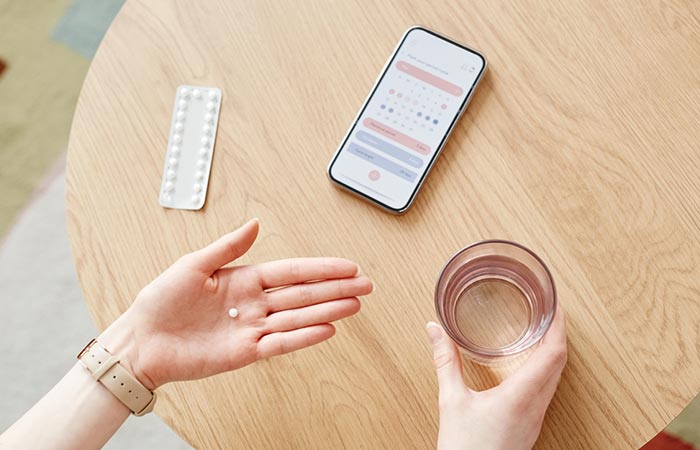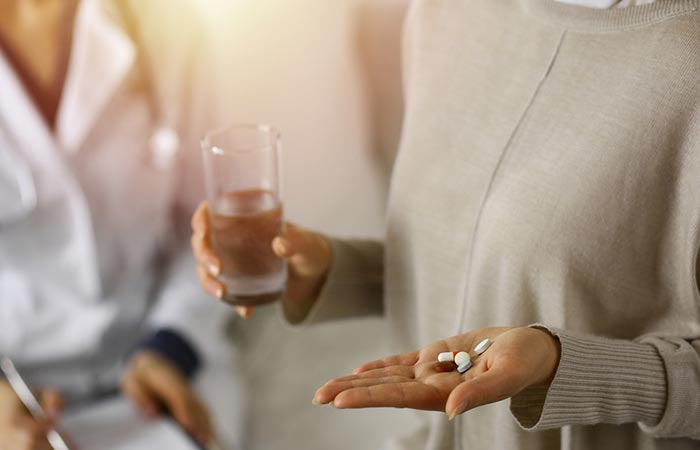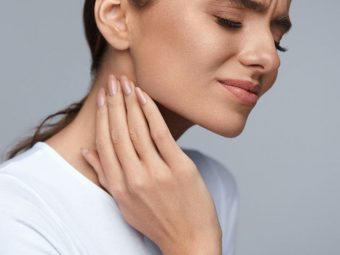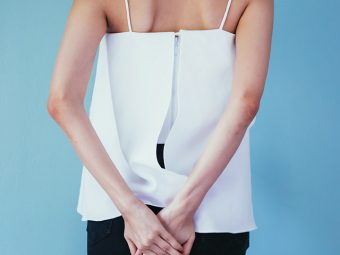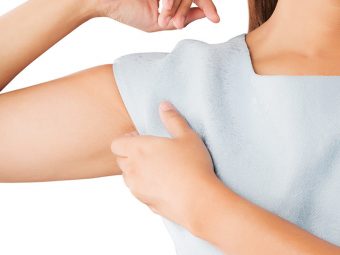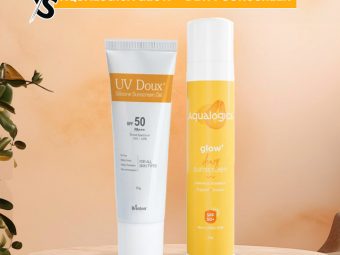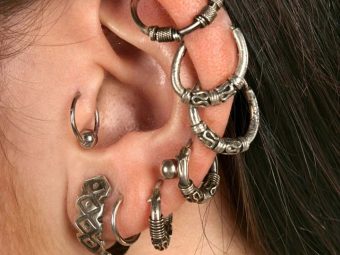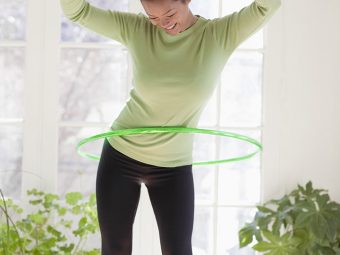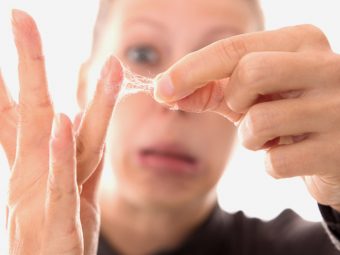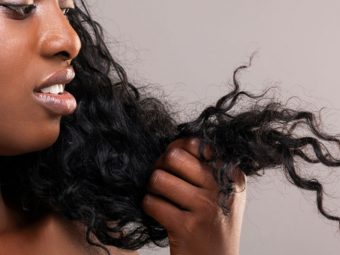5 Best Home Remedies For Cystic Acne | Causes And Prevention
Your handy guide to learn about the symptoms of and remedies for this painful skin condition.

Image: Shutterstock
Cystic acne is painful that requires medical treatment. It is a severe condition of acne that may leave permanent scarring marks and blemishes if you do not treat it on time. Though it is best to consult a dermatologisti XA doctor with board certification who is qualified to identify and treat disorders of the skin, hair, and nails. , you can also try some home remedies to manage this condition. These homemade remedies will help treat the inflammation and manage the irritation. This article discusses cystic acne, home remedies to treat it, and other treatment options available. Keep reading!
In This Article
How To Identify Cystic Acne
Cystic acne is a severe form of acne (1). It is a deep acne formed in the skin and is larger than any other form of acne. The cysts have a smooth surface and appear a bit shinier due to the tightness of the skin. Cystic acne usually appears on the face, neck, back, chest, arms, and behind the ears. It is softer than nodular acne and occurs as painful large pus-filled white bumps. It is also a very painful acne and the most severe form of acne vulgaris. Redness and inflammation are other identifying characteristics of this condition. Cystic acne usually appear on the face, neck,
back, chest, arms, and behind the ears. It occurs as painful large pus-filled white bumps. Redness and inflammation are other identifying characteristics of this condition. Cystic acne usually leaves permanent deep pits (ice pick scars) or shallow depressions on the skin. Papules and pustules typically contain pus as a result of a pore cavity infection. When this happens, the pustule develops into a cyst.
From hormonal changes in pubertyi XA developmental period characterized by physical and hormonal changes during which adolescents acquire sexual maturity. to using certain skin care products, several reasons can trigger cystic acne. Scroll down to know more about it!
Causes Of Cystic Acne
Acne is caused when dirt, impurities, sebumi XThe oily secretion produced by the sebaceous glands that acts as a protective and lubricating layer for skin and hair. , and bacteria get trapped in the skin pores, leading to inflammation. When the infection is deep, and the inflammation is severe, cysts or nodules are formed.
The hormonal changes in adolescence are a major factor behind cystic acne. High androgeni XA type of steroid hormone, either synthetic or natural, that controls the development and maintenance of male traits. levels may increase sebum production and cause clogged pores, trapping dirt and acne bacteria. Other factors that may trigger cystic acne include:
- Hormonal fluctuation during pregnancy, menstrual cycle, and menopausei XA stage in the lives of women characterized by an absence of menstruation and a decrease in sex hormone levels.
- Certain medications like corticosteroidsi XA group of steroid hormones generally produced in the adrenal cortex with metabolic or anti-inflammatory properties. , birth control pills, hormonal therapy
- Certain chemicals in skin care products
- Genetics and conditions like polycystic ovary syndrome (PCOSi XA hormonal disorder resulting in enlarged ovaries and tiny cysts on their outer margins that cause irregular menstruation or acne. )
 Trivia
TriviaCystic acne is problematic and needs immediate attention and care. Find some of the best natural ways to soothe painful cystic acne below.
Home Remedies For Cystic Acne
Note: These remedies will not treat cystic acne. They may only help in soothing the inflammation.
1. Baking Soda

You Will Need
- 1-2 tablespoons of baking soda
- 1 tablespoon of water
What You Need To Do
- Mix the ingredients to form a paste.
- Apply it to the affected areas and leave it on for a minute.
- Wash it off with lukewarm water and pat dry.
- Follow up with a moisturizer.
How Often?
Once or twice a week.
Why This Works
Baking soda fights acne-causing bacteria and dries up excess sebum to reduce the inflammation (2). Apply the paste to the affected area in slow, circular motions.
 Quick Tip
Quick Tip2. Apple Cider Vinegar
You Will Need
- 1 tablespoon of raw apple cider vinegar
- Cotton buds
- 1 tablespoon of water
What You Need To Do
- Dilute the ACV with water.
- Apply the mixture with the cotton bud as a spot treatment.
How Often?
Do this twice a day.
Why This Works
Apple cider vinegar is said to balance the skin pH, helping maintain its acid mantlei XA thin, slightly acidic layer that protects human skin from bacteria and other pollutants by acting as a barrier to their penetration. and soothing the inflammation.
3. Epsom Salt

You Will Need
- 2 tablespoons of Epsom salt
- 1 ½ tablespoons of baking soda
- Warm water
What You Need To Do
- Mix the ingredients to form a paste.
- Apply it as a spot treatment to the affected areas and let it dry for a few minutes.
- Wash it off with warm water.
How Often?
Do this every alternate day.
Why This Works
Epsom salt has pain-relieving properties and is often used in traditional remedies. It may help reduce swelling and pain and provide relief. This remedy works best for oily to combination skin types.
Caution: The paste can dry the skin. Seek medical help if you experience irritation.
4. Neem Oil
You Will Need
- 2-3 drops of pure neem oil
- Cotton pads
What You Need To Do
- Clean your face and apply neem oil with a cotton pad to the cystic acne.
- Leave it on overnight and wash it off in the morning.
How Often?
Do this two to three times a day.
Why This Works
Neem oil is used as an alternative remedy for acne (3). It may help reduce inflammation and redness associated with cystic acne.
 Quick Tip
Quick Tip5. Witch Hazel

You Will Need
- 1 teaspoon of witch hazel
- Cotton ball
What You Need To Do
- Dab the cotton ball soaked in witch hazel on the cleansed affected areas.
- Leave it on.
How Often?
Use it twice or thrice every day as a toner after you wash your face.
Why This Works
The antiseptic and astringenti XA property or ingredient that allows the skin's cells and body tissues to contract to make skin less oily or keep cuts from bleeding. properties of witch hazel can soothe acne and reduce inflammation (4).
Michelle Montoro, a blogger, reflects on the skin issues she faced during menopause, particularly cystic outbreaks that suddenly appeared on her skin only in her 40s. A remedy she found helpful was flaxseed oil. She writes, “I have been relying on flaxseed oil to treat my cystic skin inflammation. I noticed an immediate reduction in the inflammation of the deep cysts on my face. Like within days. And the itchiness went away as well which also led to a minimizing of the redness and irritation on the surface of my skin (i).”
Home remedies may only help manage the redness and inflammation. You need proper acne treatment for cystic acne. Check out the over-the-counter treatment methods available for cystic acne below.
Treatments Options For Cystic Acne
1. Retinoids And Isotretinoin
Retinoids and isotretinoin are vitamin A derivatives and potent prescription acne medications for cystic acne (5), (6). These are usually available in the forms of creams, lotions, and ointments.
Doctors often prescribe oral Accutane for treating severe cystic acne. However, avoid taking this if you are pregnant, as it may cause birth defects. Other potential side effects include mood disorders, liver problems, dry eyes, blood in urine, increased skin sensitivity to the sun, and muscle or joint pains (7). Hence, talk about all possible side effects with your doctor before starting the medication.
2. Oral Antibiotics
Oral antibiotics can treat severe inflammatory acne. These are often combined with topical retinoids and benzoyl peroxide to reduce inflammatory and comedonal lesions.
Antibiotics like tetracyclines (doxycycline and minocycline) and macrolides (azithromycin and erythromycin) have antibacterial effects and reduce the proliferation of acne-causing bacteria (8). Oral antibiotics also cause some side effects, including sun sensitivity, vomiting, abdominal pain, diarrhea, and nausea. Consult your doctor before using them.
3. Spironolactone And Corticosteroids
Spironolactone is a steroid used for treating severe acne. Studies found that a dose of 50 to 100 mg per day could reduce excess sebum production and reduce inflammation (9).
Spironolactone and corticosteroids can regulate excess androgen levels and reduce acne inflammation. This treatment is often prescribed for treating hormonal acne. However, it may cause breast enlargement in men (10). Also, if you are pregnant, consult a doctor before taking steroids and spironolactone.
4. Oral Contraceptives
Oral contraceptives are a viable option for controlling hormonal fluctuation and acne. Birth control pills balance estrogen levels, decrease androgen levels, and reduce sebum production to reduce acne (11). However, these are not suitable for everyone.
Avoid oral contraceptives if you smoke, have blood clot issues, or trying to get pregnant. Women may experience side effects like breast tenderness, increased vaginal discharge, abdominal cramping, nausea, and headaches (12). It may rarely cause adverse effects like blood clots and heart attacks, especially in women over 35 years.
5. Benzoyl Peroxide
Benzoyl peroxide is available as cleansing liquids and bars, lotions, creams, and gels. It is a bactericidal, keratolytic (breaks down outer layers of skin), and comedolytic (prevents comedone formation) agent. It also has anti-inflammatory properties that reduce acne-causing bacteria and prevent new lesions (13), (14).
Alcohol-based formulations of benzoyl peroxide have a drying effect, making them suitable for oily skin. However, excessive use of benzoyl peroxide may cause skin irritation.
Apart from systemic treatments and home remedies, you may try comedone extraction to minimize inflammation. Ice therapy may also provide temporary relief and reduce pain. Look into the following tips to help you prevent or reduce the risk of worsening your acne.
How To Prevent Cystic Acne
- Cleanse your face twice a day. Avoid using rough scrubs, strong cleansers, and soaps. Use a gentle cleanser in the morning and before sleeping. Rinse your face with lukewarm water.
- Wear sunscreen to prevent sunburns and tanning.
- Avoid touching, scratching, and rubbing the acne lesions.
- If you have an oily scalp, shampoo your hair regularly.
- Use non-comedogenici XA skin care ingredient or cosmetic aimed at reducing acne and its related symptoms without blocking skin pores. and oil-free skin care products.
Acne cysts are often assumed to be the same as nodules. However, the two are distinctly different. Learn more in the next section.
Acne Cyst Vs. Nodule
Acne cysts and nodules are both severe, painful forms of acne that can be challenging to treat.
Cystic acne can cause large, deep cysts that feel soft to the touch and are often associated with inflammation and scarring. They may cause considerable pain and discomfort.
Nodules, on the other hand, are solid, dome- or irregularly-shaped lesions that develop deep within the skin. They are often larger than typical pimples. They also can be quite sensitive or painful to the touch (15).
Both cysts and nodules can last for weeks or even months and are typically resistant to over-the-counter treatments. Their effective management warrants the help of a dermatologist. Getting the right treatment is essential to prevent long-term scarring and skin damage.
Infographic: 3 Natural Ways To Treat Cystic Acne
Cystic acne can be painful and is caused by hormonal imbalances and PCOS (polycystic ovary syndrome). The inflammation and scars caused by it may not go away easily. The good news is that you can use simple kitchen ingredients to help manage the symptoms and appearance of cystic acne. Check out the infographic below to know more.

Illustration: StyleCraze Design Team
Cystic acne is different from the normal pimples you get. It is a severe type of acne that requires medical treatment. You may also include serums containing salicylic acid, glycolic acid, and tea tree oil in your skin care routine to get rid of cysts.
Otherwise, it may leave permanent scars on your face. Hormonal changes, medications, certain skin care products, genetics, and PCOS may cause cystic acne. The home remedies discussed in the article may help you soothe cystic acne and soothe the skin. You may also consult your dermatologist to identify the underlying medical condition to determine which treatment suits you the best.
Frequently Asked Questions
Can you pop cystic acne?
No. Popping cystic acne can introduce more bacteria into the pore, worsening the infection.
Does cystic acne go away?
No. Cystic acne may improve with treatment, but it won’t go away.
How long does cystic acne last?
With proper treatment, you may expect cystic acne to improve by 8-12 weeks. However, the recovery depends on the severity and may leave behind scars.
Does stress cause cystic acne?
Yes. Stress can trigger your oil glands and cause an acne flare-up (1).
Key Takeaways
- A serious type of acne that manifests as unpleasant, big bumps, filled with white pus is referred to as a cystic acne.
- Many skincare products, genetics, hormonal issues, PCOS, and drugs can cause this condition.
- Natural and effective remedies such as neem oil, witch hazel, and Epsom salt can relieve the irritation and swelling.
- It is advisable to wash and clean your face twice a day and use oil-free skin care products to prevent cystic acne.

Image: Stable Diffusion/StyleCraze Design Team
Want to get rid of stubborn breakouts and achieve clear skin? Click on this video to learn how to treat cystic acne with simple yet effective tips for a confident you.
Personal Experience: Source
StyleCraze's articles are interwoven with authentic personal narratives that provide depth and resonance to our content. Below are the sources of the personal accounts referenced in this article.
i. The Benefits of Flaxseed Oil for Cystic Acnehttps://shelbeeontheedge.medium.com/the-benefits-of-flaxseed-oil-for-cystic-acne-acb918a68527
References
Articles on StyleCraze are backed by verified information from peer-reviewed and academic research papers, reputed organizations, research institutions, and medical associations to ensure accuracy and relevance. Read our editorial policy to learn more.
- Acne: more than skin deep
https://www.ncbi.nlm.nih.gov/pmc/articles/PMC2585707/ - ACNE-CAUSES AND AMAZING REMEDIAL MEASURES FOR ACNE
https://www.researchgate.net/publication/340874478_ACNE-CAUSES_AND_AMAZING_REMEDIAL_MEASURES_FOR_ACNE - A review of diagnosis and treatment of acne in adult female patients
https://www.ncbi.nlm.nih.gov/pmc/articles/PMC5986265/ - Antioxidant and potential anti-inflammatory activity of extracts and formulations of white tea rose and witch hazel on primary human dermal fibroblast cells
https://www.ncbi.nlm.nih.gov/pmc/articles/PMC3214789/ - Management of severe acne
https://pubmed.ncbi.nlm.nih.gov/25597508/ - Why Topical Retinoids Are Mainstay of Therapy for Acne
https://www.ncbi.nlm.nih.gov/pmc/articles/PMC5574737/ - Acne
https://www.womenshealth.gov/a-z-topics/acne - Oral Antibiotic Therapy for Acne Vulgaris
https://www.ncbi.nlm.nih.gov/pmc/articles/PMC3050614/ - Oral Spironolactone in Post-teenage Female Patients with Acne Vulgaris
https://www.ncbi.nlm.nih.gov/pmc/articles/PMC3315877/ - STUBBORN ACNE? HORMONAL THERAPY MAY HELP
https://www.aad.org/public/diseases/acne/derm-treat/hormonal-therapy - Oral contraceptives in the treatment of acne
https://pubmed.ncbi.nlm.nih.gov/11242137/ - Oral Contraceptive Pills
https://www.ncbi.nlm.nih.gov/books/NBK430882/ - Management of acne
https://www.ncbi.nlm.nih.gov/pmc/articles/PMC3080563/ - ACNE VULGARIS TREATMENT : THE CURRENT SCENARIO
https://www.ncbi.nlm.nih.gov/pmc/articles/PMC3088940/ - Acne Vulgaris
https://www.ncbi.nlm.nih.gov/books/NBK459173/





